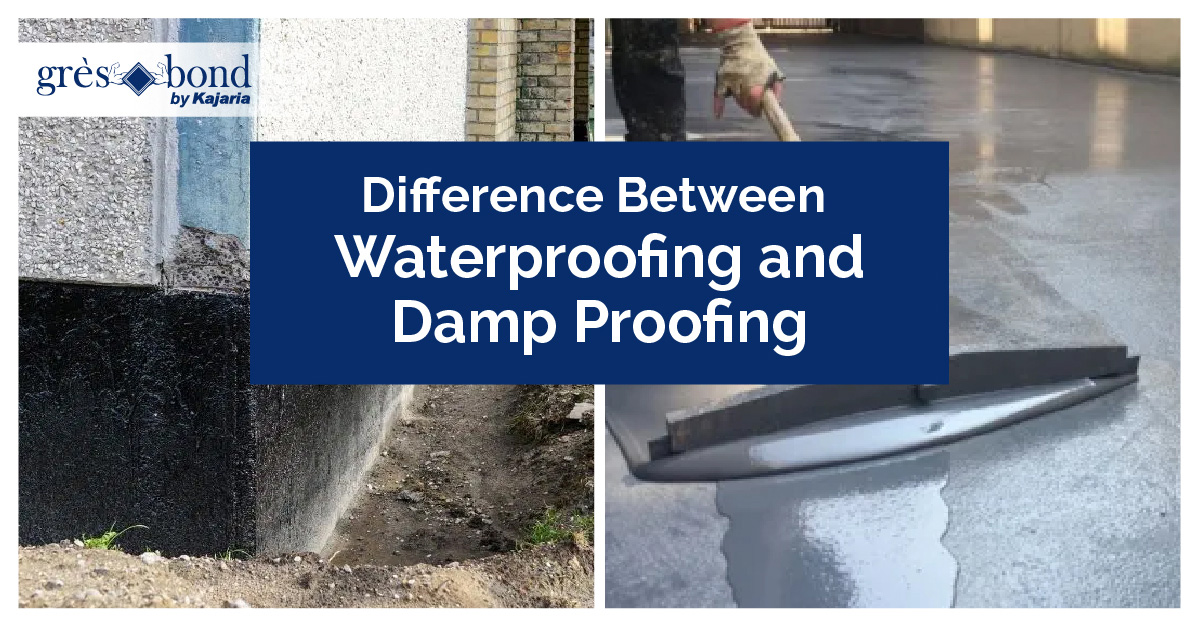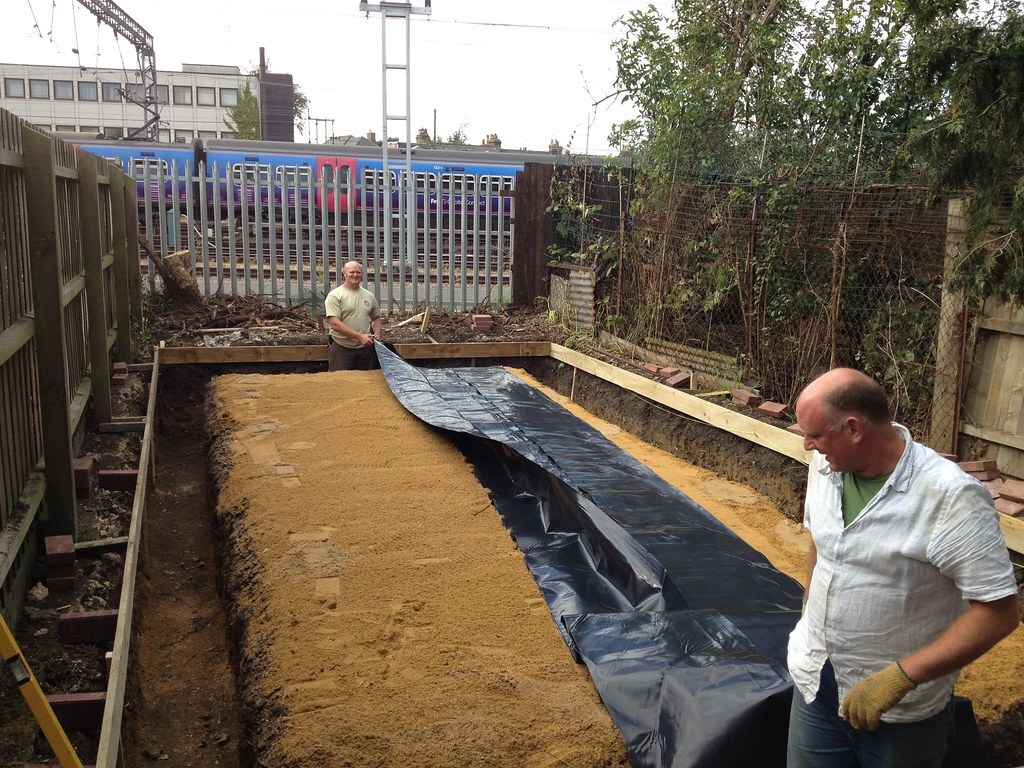Discovering the Various Techniques and Solutions for Effective Damp Proofing
Moisture in buildings presents significant obstacles to both architectural honesty and indoor air quality. Numerous techniques and solutions have arised to fight this pervasive problem. From typical damp-proof membranes to innovative chemical therapies, each technique supplies distinct benefits. Comprehending these choices is vital for reliable dampness control. Nonetheless, choosing the best service depends on particular structure problems and demands, triggering additional exploration into the most reliable damp proofing techniques readily available.
Understanding the Root Causes Of Dampness
Although moisture can occur from different resources, recognizing these causes is crucial for reliable removal. Typically, moisture stems from 3 main resources: rising moist, permeating damp, and condensation. Climbing wet takes place when groundwater takes a trip up-wards via permeable products, such as block or rock, commonly as a result of a lack of an effective barrier (damp removal newcastle). Passing through wet is typically brought on by exterior factors, including roof leakages, defective seamless gutters, or harmed walls, allowing water to penetrate a building. Condensation, on the other hand, arises from excess dampness in the air, usually intensified by poor ventilation and temperature distinctions, resulting in water beads basing on surfaces. Recognizing these underlying issues is vital, as each kind of wetness calls for a customized method for removal. Appropriate assessment helps in figuring out the most effective solutions, ultimately securing the structural honesty of a building and boosting indoor air quality
Traditional Damp-Proof Membranes

Chemical Damp-Proofing Solutions
Chemical damp-proofing solutions provide an innovative strategy to stop wetness invasion in structures. These methods commonly include the application of fluid chemicals that permeate stonework and create a barrier against climbing wet. Typically utilized chemicals consist of silanes, siloxanes, and various other water-repellent agents that react with surface products to develop a hydrophobic layer.The application procedure normally needs boring openings right into the walls, injecting the chemical service, and permitting it to cure. This approach is particularly helpful for older frameworks where conventional damp-proof membrane layers may be unwise. Chemical damp-proofing can be much less disruptive and more affordable than substantial remodelling projects.While reliable, these remedies depend on appropriate application and ecological problems for peak efficiency. damp removal newcastle. Normal upkeep and monitoring are vital to guarantee the durability of the damp-proofing treatment. Generally, chemical damp-proofing represents a flexible option for securing buildings versus moisture-related damage
Cavity Wall Surface Construction Strategies
Cavity wall surface building and construction strategies use various benefits, specifically in dampness control and power performance. By integrating an air space in between two layers of stonework, these wall surfaces efficiently minimize water ingress while improving insulation. This combination not just safeguards frameworks from moisture but likewise adds to minimized power usage.
Advantages of Cavity Wall Surfaces
When considering reliable wet proofing techniques, the advantages of tooth cavity wall surfaces stand apart plainly. Dental caries walls consist of 2 separate layers, producing an air space that efficiently minimizes wetness penetration. This design minimizes the threat of moisture, as the outer wall surface acts as an obstacle against rainfall and water ingress. In addition, tooth cavity wall surfaces boost thermal insulation, which adds to power performance by reducing warmth loss. They additionally supply audio insulation, aiding to create a quieter interior environment. In addition, the air gap enables air flow, which helps in moisture control and decreases the probability of mold development. These benefits not only enhance the overall convenience of a structure yet likewise add to its long life and structural integrity.
Wetness Control Techniques
Effective moisture control methods are important in cavity wall surface building to ensure long-term protection versus wetness. One primary technique entails the incorporation of weep openings, which help with water drainage from the dental caries, stopping accumulation. In addition, using breathable membrane layers can help manage dampness levels while allowing trapped vapor to leave. Correct positioning of insulation is likewise important, as it must not obstruct water drainage paths. Moreover, making sure that the external leaves of the dental caries wall surface are constructed with waterproof products boosts general sturdiness. Routine maintenance checks are necessary to recognize any type of clogs or damages early, safeguarding the structure's stability. Inevitably, a mix of these techniques creates a durable defense against moisture breach in tooth cavity walls.
Insulation and Energy Performance
Insulation plays a crucial duty in boosting energy efficiency within tooth cavity wall surface building. By including shielding products, these wall surfaces produce a thermal obstacle that decreases warm loss and minimizes energy consumption. Reliable insulation not just helps preserve a secure interior temperature level yet additionally alleviates the threat of moisture, as it protects against condensation within the wall surface dental caries. Numerous strategies, such as the usage of stiff foam boards or mineral woollen, can be utilized to attain ideal insulation performance. Furthermore, correct installment is necessary to ensure that voids and gaps are reduced, which can or else compromise power performance. Eventually, a well-insulated tooth cavity wall surface adds significantly to total sustainability and decreases home heating and cooling costs for house owners.
External Damp Proofing Methods
Outside wet proofing methods are important for shielding structures from moisture seepage. Two reliable strategies consist of the application of water resistant membranes and the setup of French drains pipes. These remedies assist minimize water accumulation and maintain the integrity of buildings.
Waterproof Membrane Application
While numerous methods exist for avoiding wetness ingress, the application of waterproof membranes continues to be a very efficient external wet proofing read more method. These membranes are generally made from products such as polyethylene, rubber, or changed asphalt, offering a robust barrier against water penetration. The setup process includes applying the membrane layer to the external surfaces of wall surfaces or structures, making sure full protection to avoid leaks. Appropriate attachment and securing at joints are crucial to maximizing effectiveness. Water resistant membranes can be used in numerous types, consisting of liquid layers and sheet membranes, enabling for adaptability based on the details needs of the structure. This technique not just protects structures from dampness however also improves their durability and architectural integrity.
French Drain Installation
One effective method for handling groundwater and stopping wetness accumulation around a building's foundation is the setup of a French drain. This water drainage system contains a trench filled up with gravel and a perforated pipe that redirects surface area water away from the foundation. Proper installation calls for mindful preparation, making sure that the drainpipe inclines away from the framework to promote excellent water circulation. Furthermore, the place of the drain is crucial; it should be positioned in areas vulnerable to pooling or excess moisture. Regular upkeep, including clearing particles from the gravel and making certain the pipe continues to be unobstructed, is necessary for long-lasting effectiveness. Ultimately, a well-installed French drain can substantially decrease the danger of water-related concerns in structures and basements.
Inside Waterproofing Techniques
Inside waterproofing approaches are crucial for protecting a structure's inside from wetness infiltration and prospective water damages. These techniques generally include the application of customized materials and methods developed to create a moisture obstacle within the framework. One typical strategy is using water-proof layers or sealers on wall surfaces and floorings, which prevent moisture from penetrating surfaces.Additionally, mounting interior drain systems, such as sump pumps, can properly handle water build-up in basements and crawl spaces. Another approach includes the usage of vapor barriers, which are mounted to hinder wetness movement from the ground into living spaces.Moreover, resolving any type of fractures or voids in wall surfaces or structures with suitable sealers guarantees a detailed protection versus water breach. By applying these interior waterproofing methods, residential property owners can significantly minimize the threat of mold growth, structural damage, and other moisture-related issues. Proper implementation of these techniques is important for long-term protection and building honesty.
Regular Maintenance and Evaluation Practices
Regular maintenance and inspection techniques are crucial for assuring the long-lasting efficiency of moist proofing services in any kind of building. Regular checks allow homeowner to determine very early indicators of wetness intrusion, such as peeling off paint, mold and mildew development, and moldy smells. These indicators can signify underlying problems that require prompt attention.Inspections need to be conducted at least each year, focusing on at risk areas like cellars, crawl spaces, and exterior wall surfaces. During these evaluations, homeowner need to analyze sealers, water drainage systems, and ventilation to validate they function correctly.Additionally, keeping rain gutters and downspouts is necessary, as stopped up systems can cause water buildup near the foundation. Applying a routine maintenance routine, along with prompt repair work, can significantly expand the life-span of wet proofing measures and safeguard the architectural stability of the structure. Aggressive measures eventually add to the general wellness and security of the living setting.
Often Asked Inquiries
How Much Time Does Damp Proofing Generally Last?
The duration of wet proofing efficiency differs, usually lasting in between 20 to half a century. Variables such as application top quality, environmental problems, and upkeep methods substantially affect the long life of the damp proofing therapy.

Can I Damp Evidence My Home Myself?
The specific considered the feasibility of do it yourself damp proofing. With appropriate research and the best materials, it is possible. Nevertheless, they additionally recognized the significance of specialist assistance to guarantee long-lasting efficiency and prevent future concerns.
What Are the Signs of Ineffective Damp Proofing?
Indications of inefficient wet proofing include relentless stuffy smells, visible mold and mildew development, peeling off paint, moist patches on walls, and wood decay - damp proofing newcastle. Homeowners need to address these problems promptly to stop additional damages and wellness problems
Does Damp Proofing Affect Indoor Air Quality?

How Much Does Specialist Damp Proofing Cost?
Specialist damp proofing costs differ substantially, usually varying from $1,000 to $5,000 depending on the property's size, the extent of the wet problem, and picked approaches. Each scenario calls for a tailored evaluation for precise pricing. Commonly, dampness originates from three key resources: climbing wet, permeating wet, and condensation. When considering efficient damp proofing approaches, the advantages of cavity walls stand out prominently. Outside moist proofing methods are important for safeguarding frameworks from dampness seepage. While various techniques exist for protecting against wetness ingress, the application of water-proof membrane layers continues to be a highly effective outside wet proofing strategy. Indicators of inefficient damp proofing consist of relentless musty smells, noticeable mold development, peeling off paint, wet patches on walls, and timber decay.